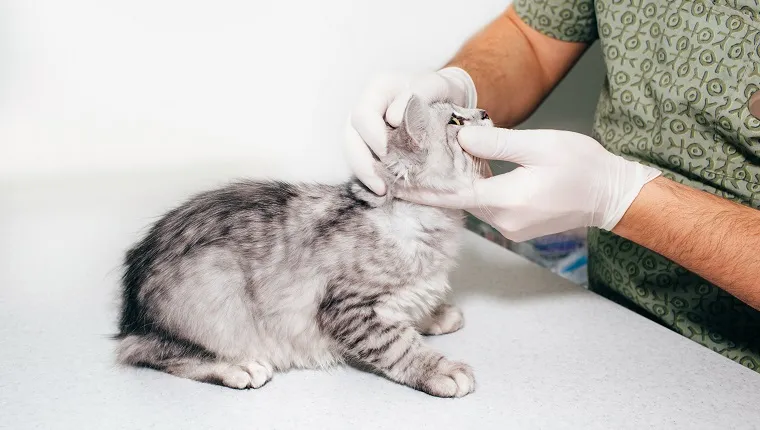Nonulcerative keratitis in cats is a medical condition where a cat’s cornea becomes inflamed and does not retain a dye called fluorescein stain that vets use under ultraviolet light to highlight any ulcers that might be present on a kitty’s cornea.
In general, cats between the ages of four and seven have the highest risk of developing the condition; although, cats can get it at any age. Specific breeds including Burmese, Siamese, and Persian cats, also have a higher risk, as well as felines who live at high altitude.
If you see signs that your cat might be developing eye issues, then you must consult your veterinarian for a proper diagnosis and advice. Here’s what you should know about the symptoms, causes, and treatments of nonulcerative keratitis in cats.
Symptoms Of Nonulcerative Keratitis In Cats
Nonulcerative keratitis in cats can produce a very wide range of different symptoms. Some of the most common symptoms include:
- Inflamed cornea
- Dark colored, circle-shaped plaques appearing on the cornea
- Fluid building up in the cornea
- General eye irritation and discomfort
- Discolored cornea
Causes Of Nonulcerative Keratitis In Cats

There are a number of causes of nonulcerative keratitis in cats. Some of the most common causes include:
- Inflamed cornea
- Herpesvirus
- Trauma or irritation to the cornea
Additionally, the Persian, Burmese, and Siamese breeds of cat seem to be more predisposed to developing the condition.
Veterinary Treatments
If you think that your cat is developing nonulcerative keratitis, then your veterinarian will want to ask about your cat’s full medical history and any recent events or circumstances that might have prompted the condition.
They’ll carry out a full physical examination, paying especially close attention to the eyes. Additionally, vets may suggest a biopsy of the cornea in some cases.
When it comes to treatment, outpatient care will usually suffice. Although in more severe cases, cats may need radiation therapy or the surgical removal of some sections of the cornea.
In general, vets will often prescribe medication as part of the treatment process. As always, if your vet prescribes your kitty any medicine, then it is vital that you stick to the precise frequency and dosage instructions and complete the full course of medication.
Has your cat developed nonulcerative keratitis? What steps did your vet take to help your kitty deal with it? Tell us all about it in the comments below.









